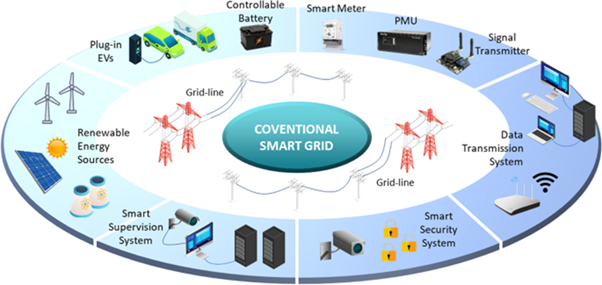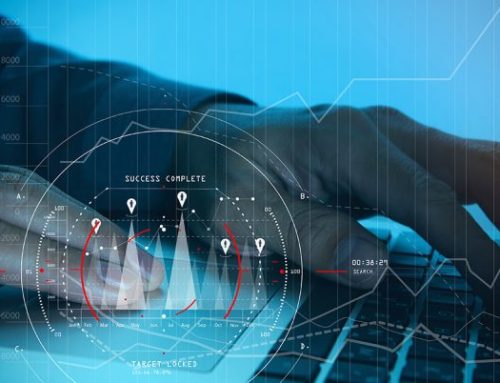What slows down your smart grid investment the most, aging systems or scattered data? For many utility firms across the US, the shift to smart grid technology isn’t a choice anymore. It’s a race. Yet, something still feels off. You build new circuits. You integrate more renewables. But faults go undetected.
Consumption patterns remain a guess. Maintenance feels like chasing ghosts. It’s not about a lack of data. It’s the wrong kind. Or worse, no way to use it.
The jump from traditional to smart energy fails without a strong tech base. Without clarity. Without a real-time response. This is where artificial intelligence transforms the scene. And Dynamics 365 for Smart Grids plays the anchor role. Through structured data, automation, and smarter decisions, AI helps utilities do what they have always wanted: run grids, not just react to them.
The Real Work of Connecting Old Grids with Smart Systems
Many legacy grids still struggle to track generation, flow, and usage in real time. Most of the hardware is not built to capture detailed data. Older systems lack inputs on where energy is going, or what part of the circuit is about to fail. Even worse, repairs only happen after outages. That reactive model wastes time and increases costs. A smart grid needs context at every level. AI fills this gap. But only if it gets access to live, clean data.
By using Dynamics 365 for Smart Grids, utility teams can collect structured records from transformers, meters, circuits, and user endpoints. These records help build a clear view of asset health. Maintenance becomes predictive, not delayed. More control means fewer breakdowns. The grid begins to talk, and you finally hear it.
Why Integration Fails Without Structured Tools
Smart grids don’t work in silos. Sensors collect one set of data. ERP tools log another. Customer apps show something else. The result? Mismatched, duplicated, or missing data. Without integration, automation fails. AI then delivers half-informed decisions or no insights at all. That’s a disaster waiting to happen in power operations.
A solid setup with Dynamics 365 for Smart Grids solves this. It brings grid control, billing, monitoring, and alerts under one screen. When linked to SCADA or ADMS platforms, all devices speak the same language. Nothing is lost between systems. It means better outage control, smoother billing cycles, and more accurate asset mapping. You stop guessing, start correcting.
Building AI on Top of Your Real-Time Grid Data
Here’s where the real shift happens. When data flows cleanly, AI tools can take over the hard tasks. Machine Learning models powered by Microsoft’s stack, like Azure ML and CoPilot, start spotting patterns. It might be transformer overuse. It might be line failures due to sudden surges. These systems don’t need a prompt. They work in the background.
Dynamics 365 for Smart Grids makes this easier. It collects fault points, load behaviors, and power dropouts in one place. AI tracks these logs and builds alerts. This lets utility teams stop faults before they become outages. Predictive thinking replaces reactive firefighting. Plus, teams can plan instead of just responding.
Cost Control in Fault Repair and Maintenance
Repairs often overshoot the budget because most cost decisions are made after breakdowns. Labor time, asset wear, and replacement costs get missed in early planning. When work orders are not tied to analytics, tracking costs in real time becomes impossible.
By aligning Dynamics 365 for Smart Grids with advanced ERP modules, utilities can:
- Monitor repair time, costs, and staff allocation
- Schedule auto-reminders for inspections
- Link sensors to cost alerts
Suddenly, work orders are not just paperwork, they guide actual savings. You control budgets. You lower disruption time. Teams stay ahead of the fault curve.
ERP Service Areas Integrated with Dynamics 365 for Smart Grids
|
Service Area |
AI Support | Real-Time Benefit |
ERP Role Linked |
|
Billing System |
Auto error checks | Faster invoice cycles |
Central view of dues and alerts |
|
Grid Health Monitoring |
Predictive alerts | Reduced outage durations |
Linked with maintenance scheduling |
|
Load Flow Optimization |
Usage patterns tracking | Balanced supply and demand |
Data shared with the planning team |
|
Field Repair Operations |
Workload mapping | Efficient field crew dispatch |
Labor time and cost matched live |
|
Customer Account Management |
ChatBot response | Quick query resolutions |
CRM history fed into the AI bot |
AI-Powered Grid Planning for Better Investment
More data now comes from renewables, EV stations, and community grids. But if that data stays unorganized, decisions go wrong. Grid teams don’t just need numbers. They need answers, where to place the next substation, how to distribute solar load, or when to shift usage.
That’s where smart forecasting tools come in. By using Dynamics 365 for Smart Grids with Microsoft’s AI engine, utilities start planning based on real behavior. The AI checks consumption spikes, tracks energy losses, and then flags bottlenecks before they impact users.
And here’s the real market push: U.S. power demand is now expected to grow at 2% every year, which doubles the earlier trend. This rise comes mainly from data centers that support AI processing. If the grid doesn’t forecast and respond, overloads will hit fast. Only AI with reliable ERP input can stop that.
Managing Expanding Circuits with One ERP Window
The power grid is growing fast, with more circuits, more endpoints, and more complexity. But dashboards haven’t kept up. Teams still toggle between tools to track faults, flows, and loads. This slows decisions and stretches teams.
Here’s what smart ERP integration offers:
- Fault detection linked to live grid view
- Load planning based on active usage
- End-to-end control from the field to the admin desk
With Dynamics 365 for Smart Grids, your ERP stops being a logbook and becomes your control tower. Everything from flow maps to energy loss trends, available in one dashboard.
Final Thoughts
Modern utility firms don’t just need data. They need clean, connected, and contextual data that supports smart decisions. AI changes everything only when it meets the right ERP backbone. From field faults to billing accuracy, AI cannot work alone. With Dynamics 365 for Smart Grids, everything becomes faster, cleaner, and more responsive.
Reach out to E-365.ai to schedule a demo and see how Dynamics 365 for Smart Grids fits your grid goals.
FAQs
- How does AI help in grid fault detection?
AI checks real-time data and alerts teams when patterns show a possible fault. This reduces downtime and increases safety.
- Can we manage renewables with Dynamics 365 for Smart Grids?
Yes, it helps plan, track, and balance solar, wind, or other green energy sources with the rest of your grid.
- What makes Dynamics 365 for Smart Grids better than legacy tools?
It combines billing, maintenance, alerts, and planning in one place. That saves time and improves decisions.






Leave A Comment